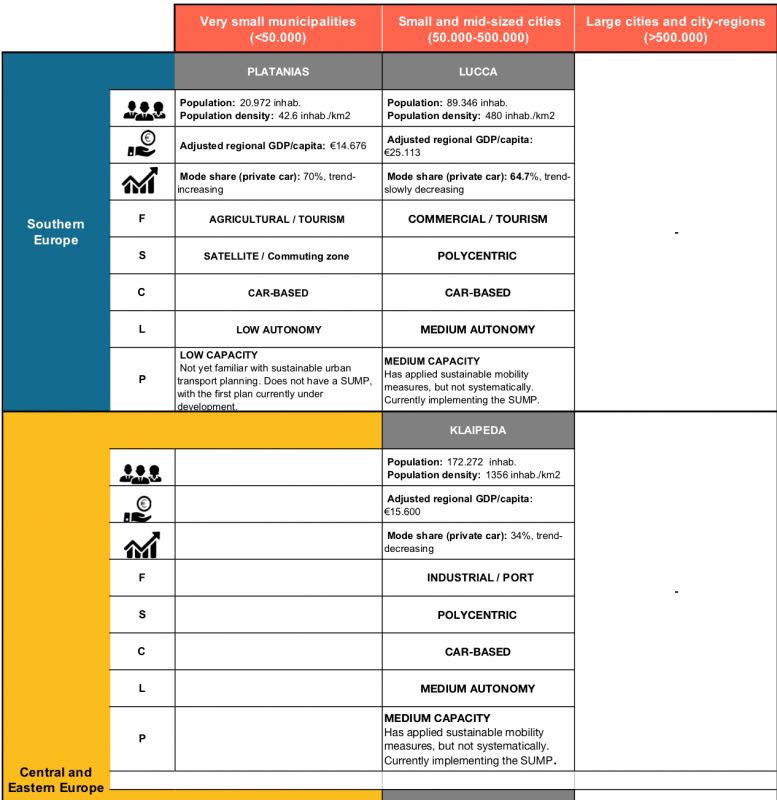SUMP-PLUS launches new typology
30 Jul 2020
All cities are unique in their own way. However, they also share certain common characteristics with a subset of smaller cities.
Recognising this, CIVITIAS SUMP-PLUS has developed a two-level city typology to capture the different circumstances, needs, and capabilities of cities across Europe. This enables cities to identify similar cities whose mobility measures they can replicate and whom they can exchange with, learn from, and track their progress against.
To develop the typology, project partners engaged in extensive desktop research to identify existing classification schemes. Altogether, 15 relevant city classifications – Eurocentric and global, mobility-related and non-mobility focused – were assessed in creating the SUMP-PLUS (European) city typology.
In addition, partners looked at the raw data of the Needs Assessment Survey from CIVITAS SUMPs-Up. With a sample size of 336 different European cities, this analysis focused on city characteristics and sustainable urban planning experience.
To locate cities within the typology more precisely, the SUMP-PLUS city typology uses quantitative indicators and descriptive categories.
Level 1: Two indicators are used for high-level framing: population size and geographic region of Europe. They frame the typology since they have been identified as having a particularly significant influence on both a city’s overall modal share and its experience with sustainable urban mobility planning.
Level 2: A further series of indicators further refine this, namely GDP, population density, as well as car mode share and trend.
Quantitative variables: Completing Level 2 are qualitative variables that help pinpoint the likely transferability of experiences from one city and another. Here, cities are asked to specify:
· Their main function(s);
· Location in relation to the wider Functional Urban Area;
· Stage according to those specified by the CREATE project;
· Local autonomy in policymaking; and,
· Capacity for integrated sustainable transport planning.
The typology, by contributing to a better understanding of different city characteristics and needs, will be utilised within SUMP-PLUS to help cities develop context-specific transition pathways for Sustainable Urban Mobility Plans. Moreover, it will guide project activities and outputs to maximise the transferability of findings.
The typology will initially undergo a testing phase with SUMP-PLUS Follower Cities.
Read more about the typology in the related project deliverable.
All news

